Lets assume we have a zig zag line or something with multiple angles. How exactly do you catch if a point is touching the line? For example, lets assume I have a scenario like this:  ]
]
Asked
Active
Viewed 136 times
1
-
Shouldn't it be possble to simply check every segment for a collision with the circle? http://stackoverflow.com/questions/1073336/circle-line-segment-collision-detection-algorithm – Marco13 Oct 08 '16 at 16:05
-
@Marco13 you mean by searching for the nearest segment? – Asperger Oct 08 '16 at 16:07
-
If you find the slope of the line and the slope of tangent line overlaps, you know they collide. – Grendizer Oct 08 '16 at 16:07
-
@Grendizer indeed but just from point A to B. That means I would have to loop through the lines segments and do the same check for each one? – Asperger Oct 08 '16 at 16:09
-
I gotta think on how to minimize the number of steps to find the solution.. – Grendizer Oct 08 '16 at 16:13
-
@Grendizer so then a function that does the typical check. I figure out the equation of a perpendicular line to the target line. Then I see where they intersect (intersection point). At last I check if target point and intersection point delta are near 0. If yes then there is a collision. Then I use this function in a loop. The loop gets all the lines that make up the polyline. – Asperger Oct 08 '16 at 16:18
-
That sounds good :) – Grendizer Oct 08 '16 at 16:41
-
Is the motion of the circle linear? – Grendizer Oct 08 '16 at 16:42
-
@Grendizer the circle is actually the mouse coordinates and the line is an svg path. So I think yes. – Asperger Oct 08 '16 at 16:44
-
If you just want to check **if** the circle touches one of the line segments (and not *where* it touches it), then you can just do `foreach (segment) if (circle.center.distanceTo(segment) < circle.radius) return true;`. – Marco13 Oct 08 '16 at 17:44
1 Answers
2
The following python code works for me to compute the shortest distance from a point to a sequence of line segments:
from math import sqrt
def point_distance_to_line_segment((x,y),(lx1, ly1),(lx2, ly2)):
line_length = sqrt((lx1-lx2)**2+(ly1-ly2)**2)
dot_product = (x-lx1)*(lx2-lx1)+(y-ly1)*(ly2-ly1)
proj_line = dot_product/line_length
if proj_line < 0:
# close to (x1,y1)
return sqrt((x-lx1)**2+(y-ly1)**2)
elif proj_line > line_length:
# close to (x2,y2)
return sqrt((x-lx2)**2+(y-ly2)**2)
else:
# in the middle
cross_product = abs((x-lx1)*(ly2-ly1)-(y-ly1)*(lx2-lx1))
return cross_product/line_length
line_pts = [(-1, 0), (0, 1), (1, 0), (2,0)]
test_p = (-1, 0)
print min([point_distance_to_line_segment(test_p,lp1,lp2)
for (lp1,lp2) in zip(line_pts[0::2], line_pts[1::2])])
Not sure if there is a way to avoid iterating through all segments. Then you can simply compare this shortest distance to your circle radius.
mengg
- 310
- 2
- 9